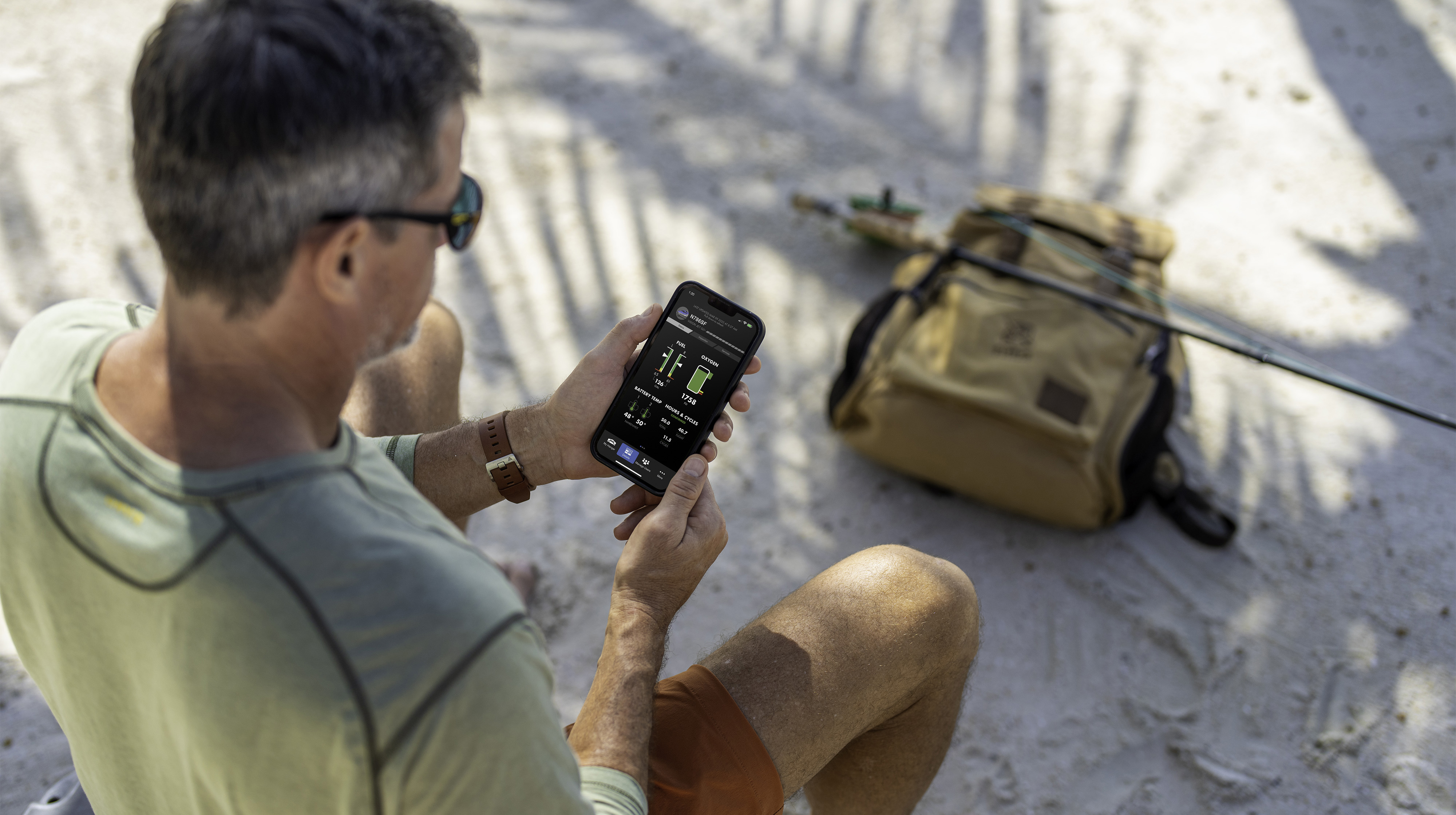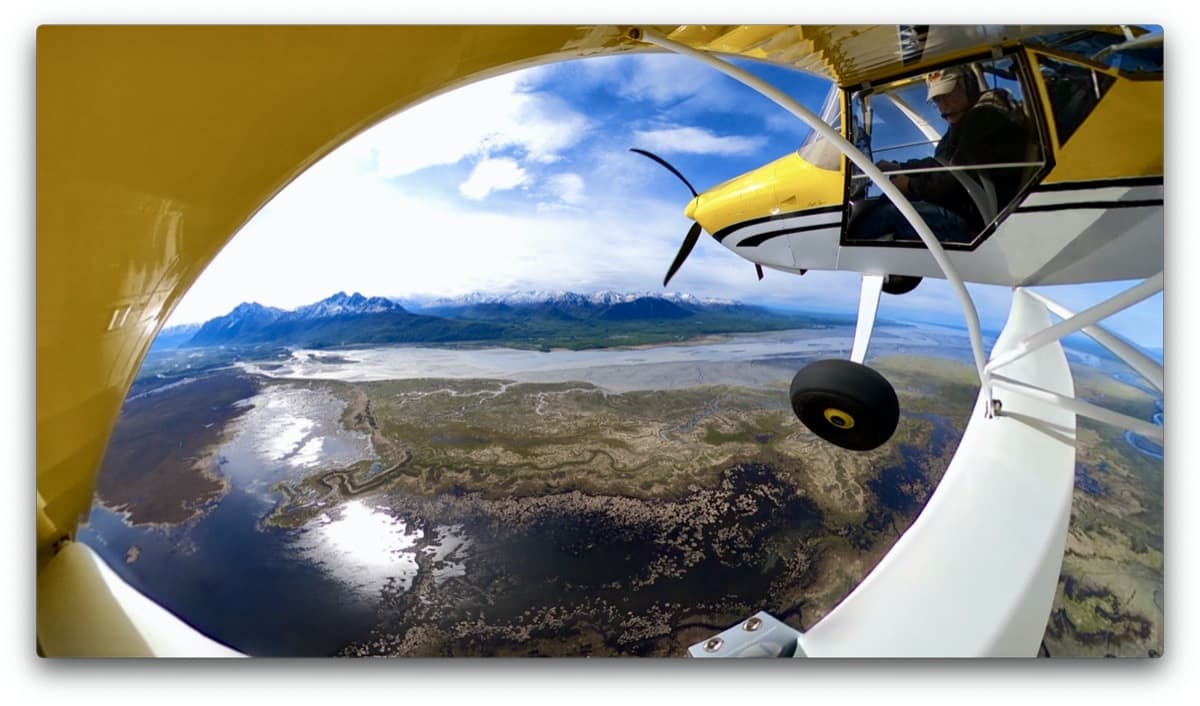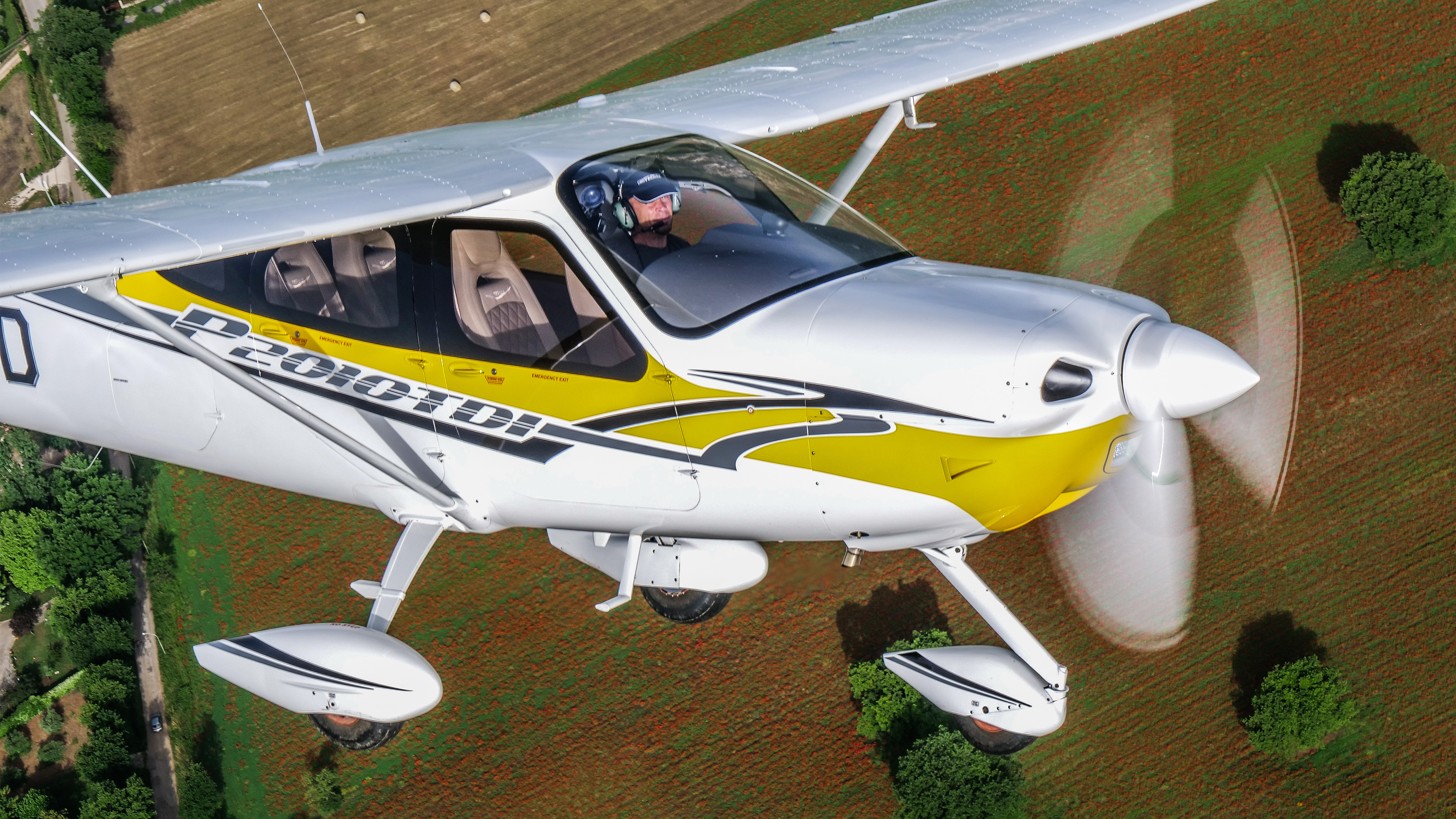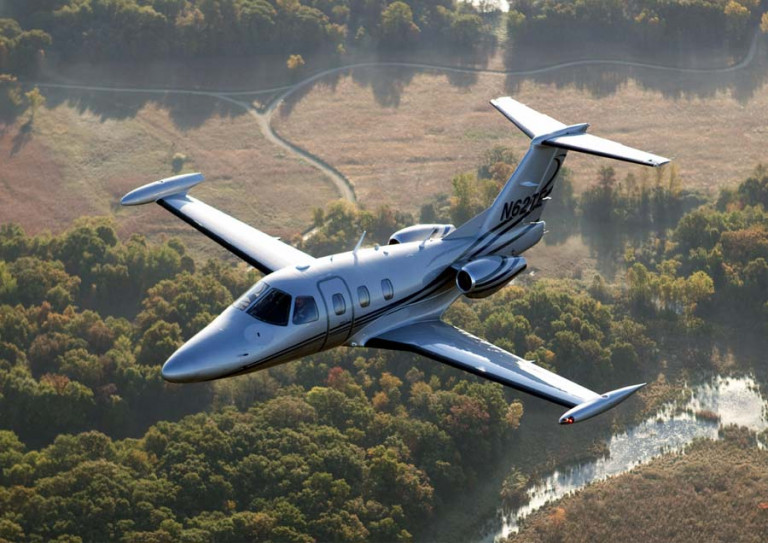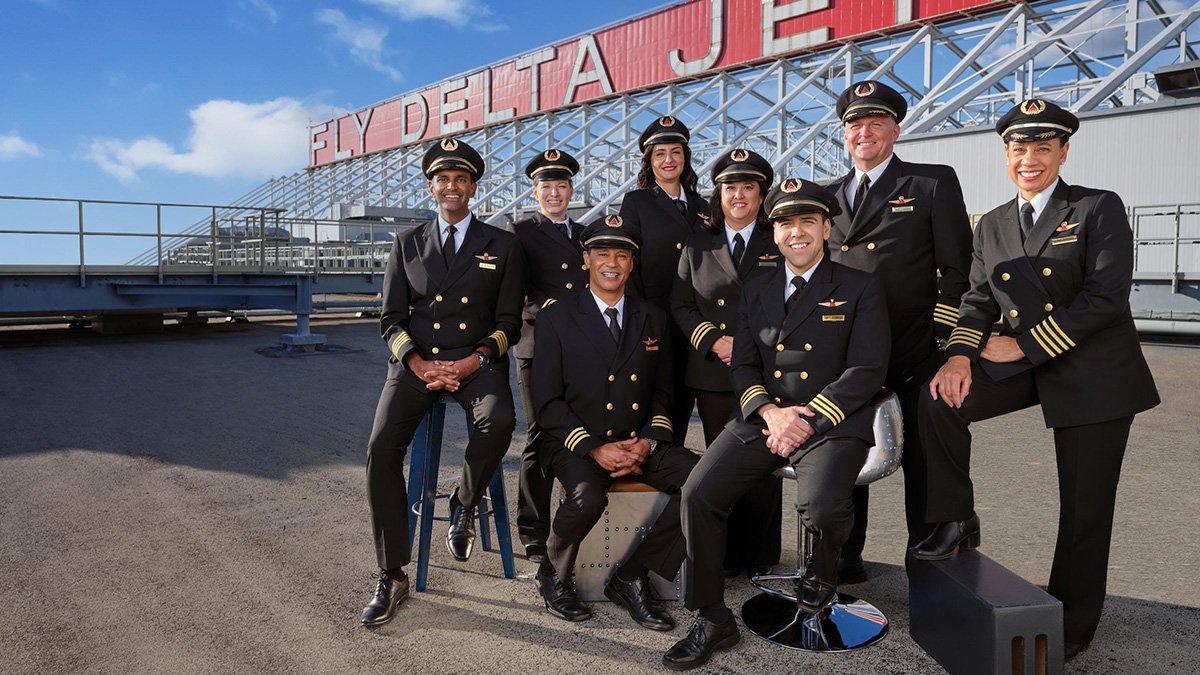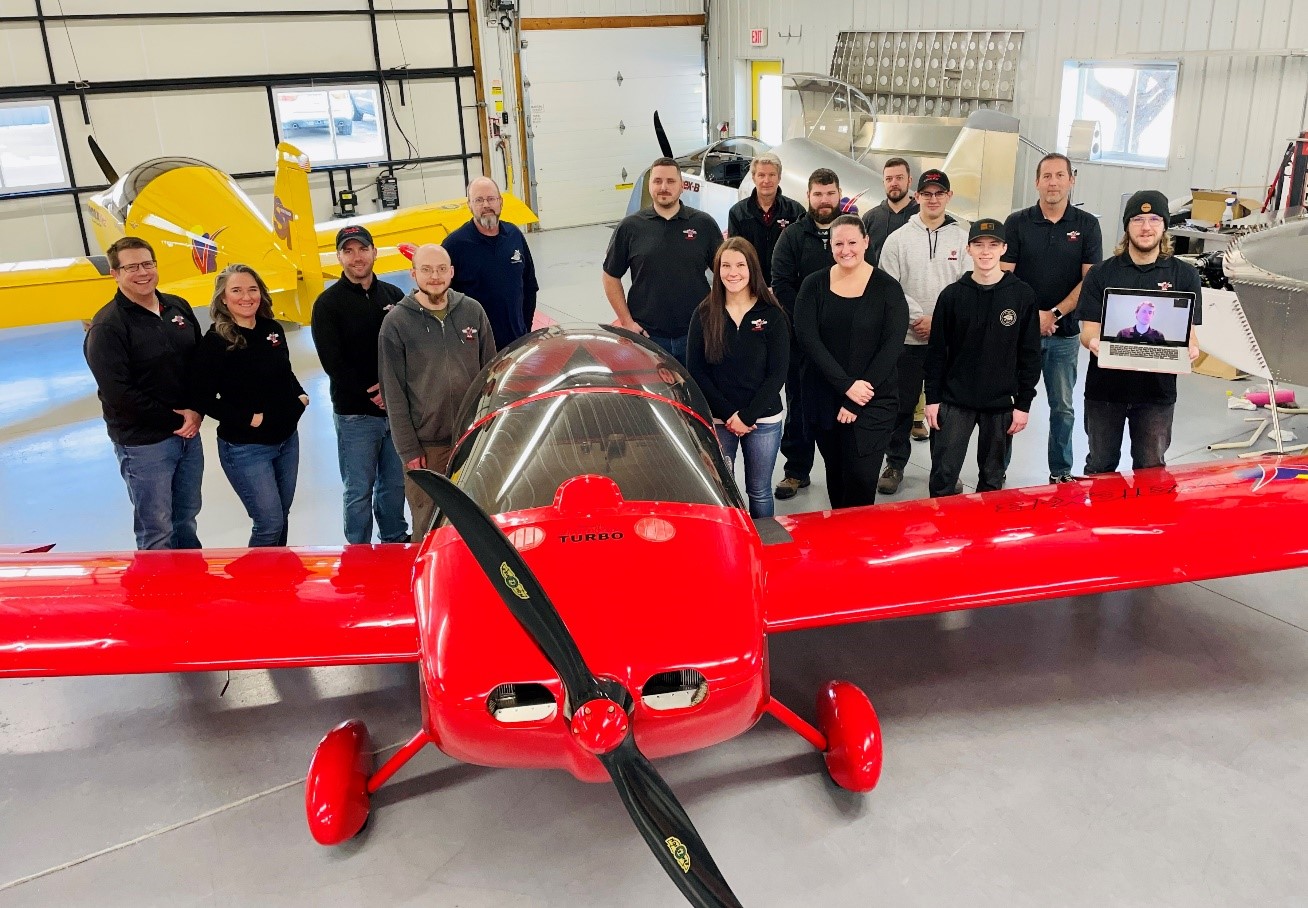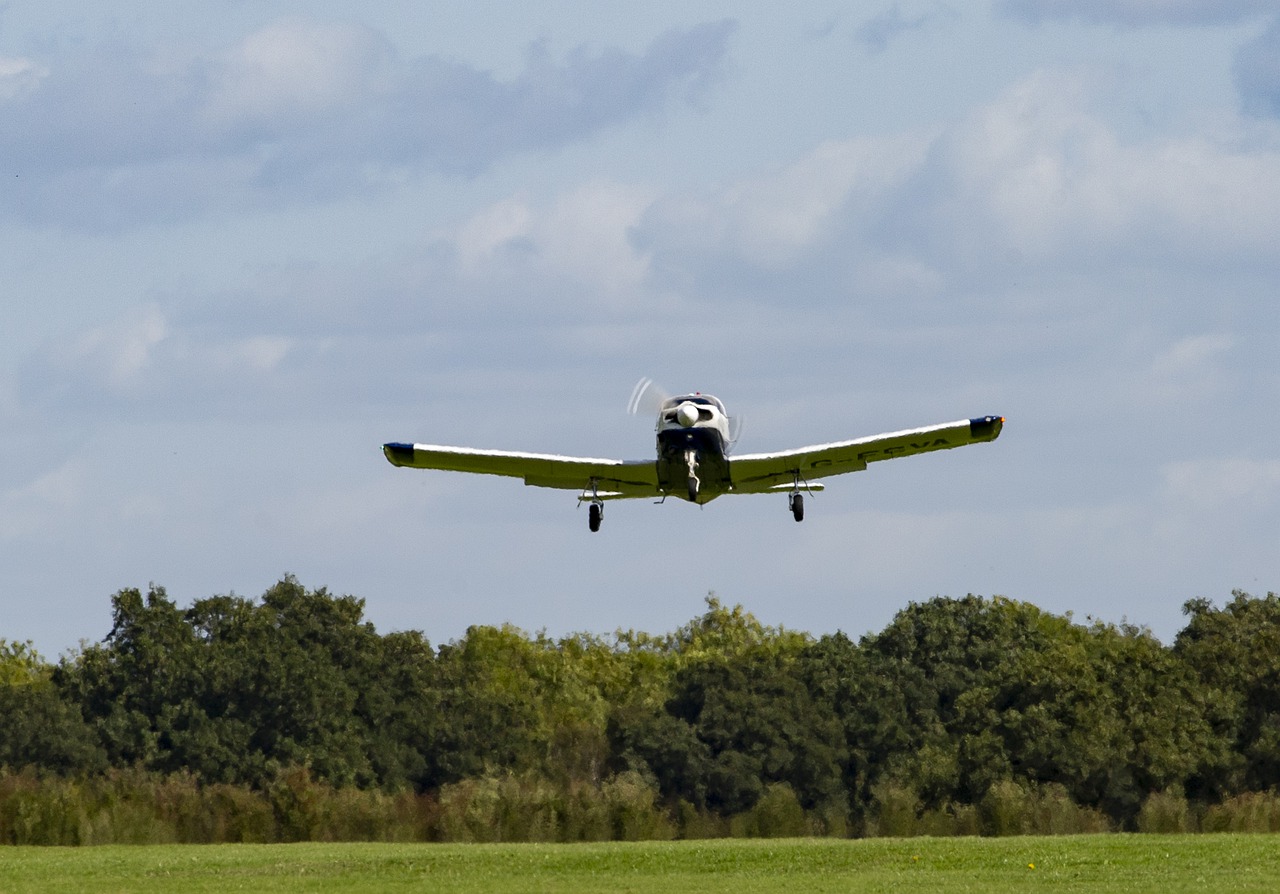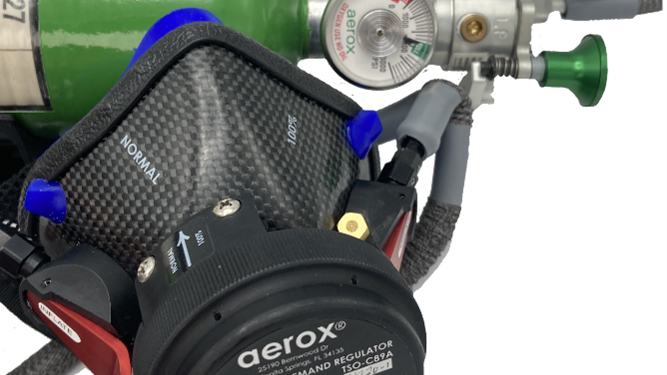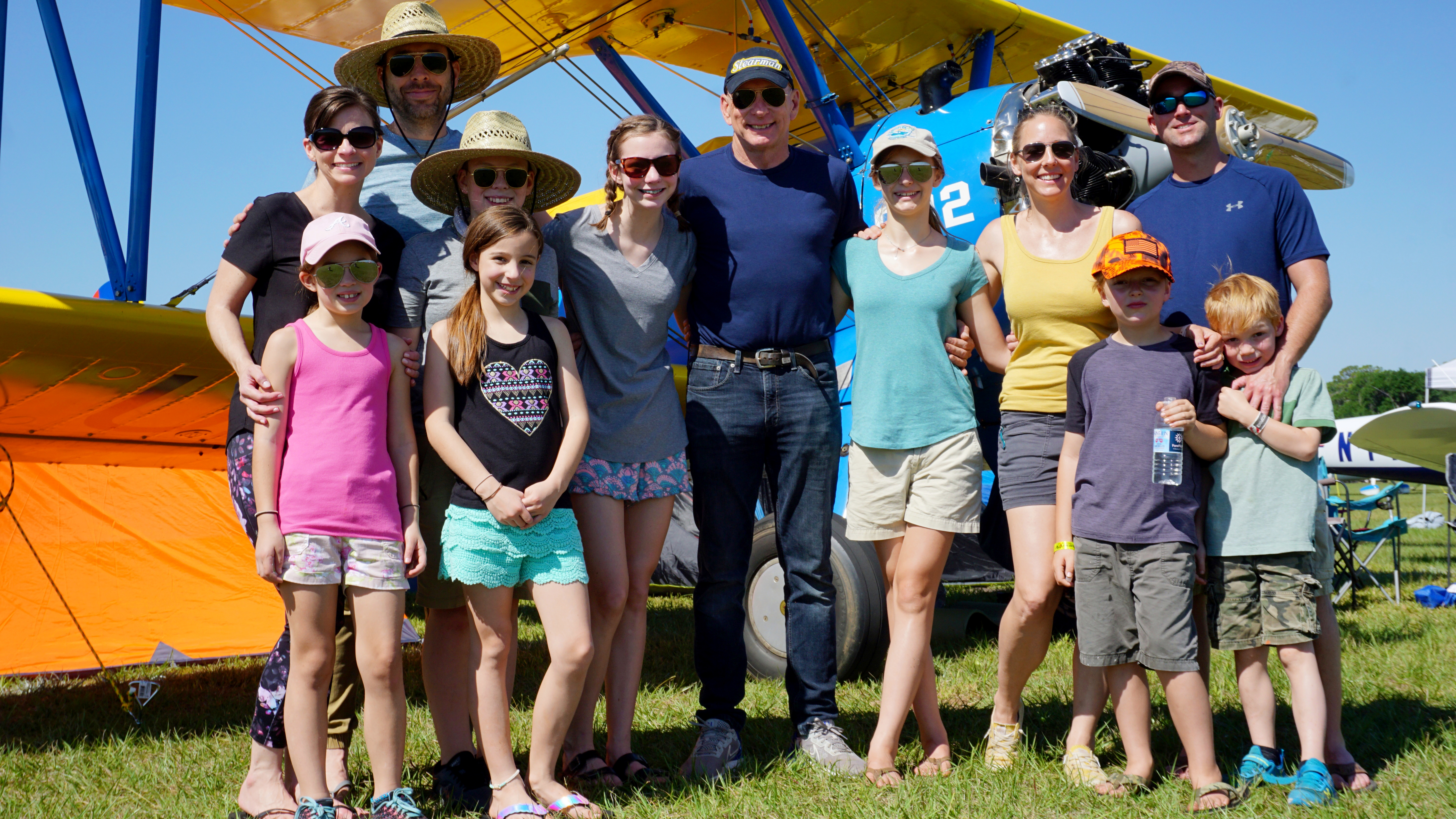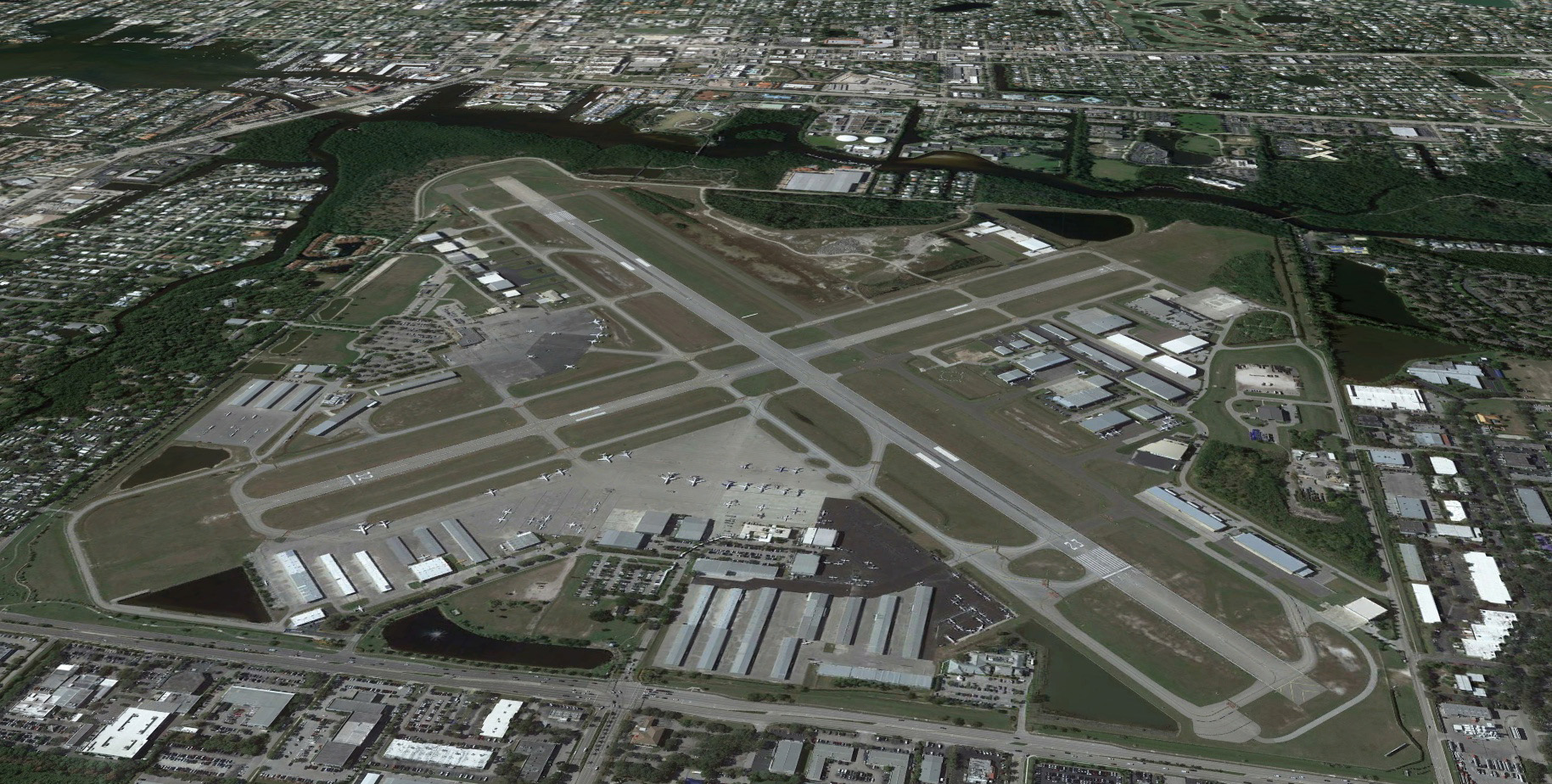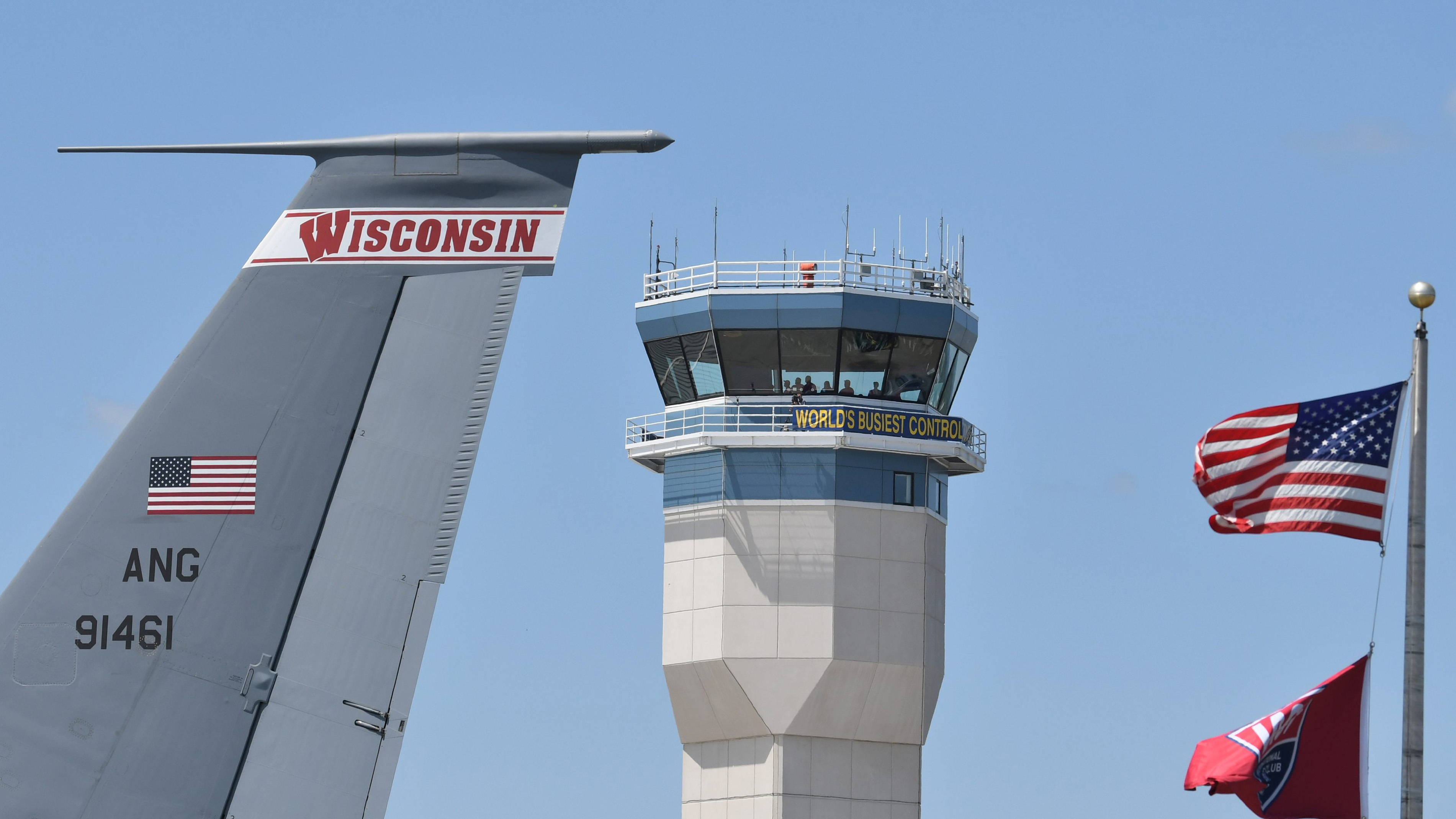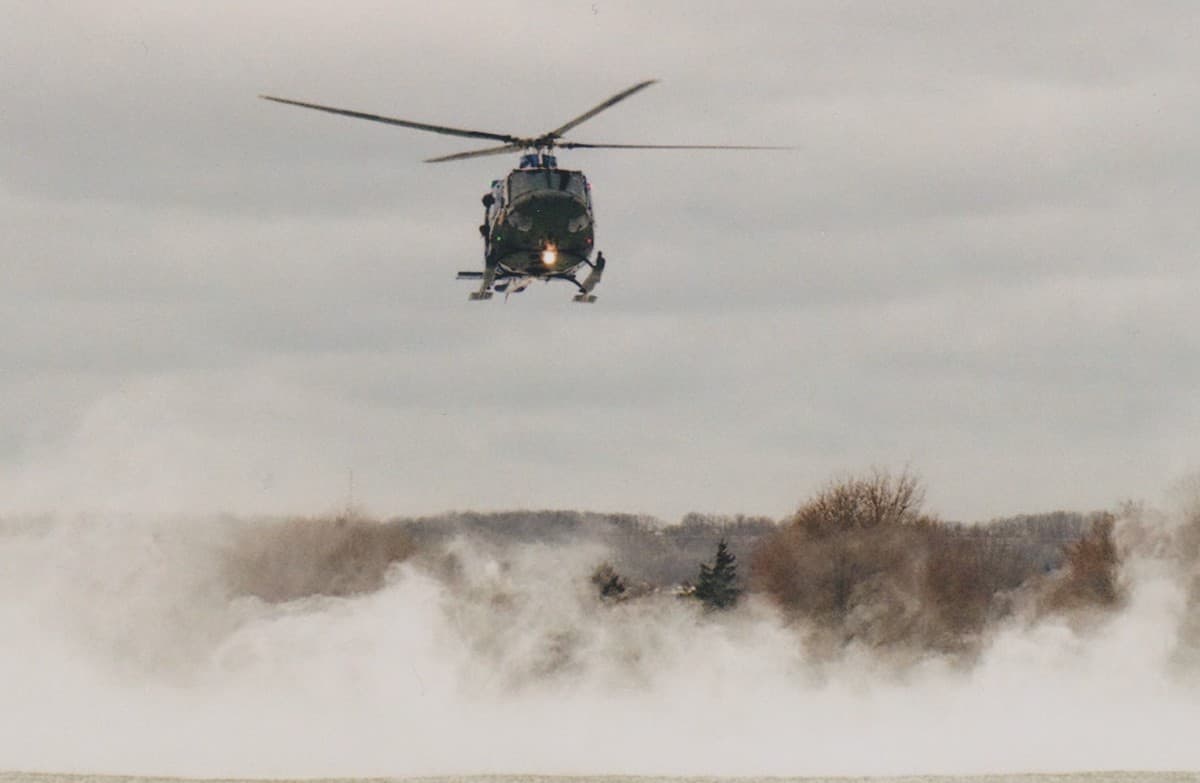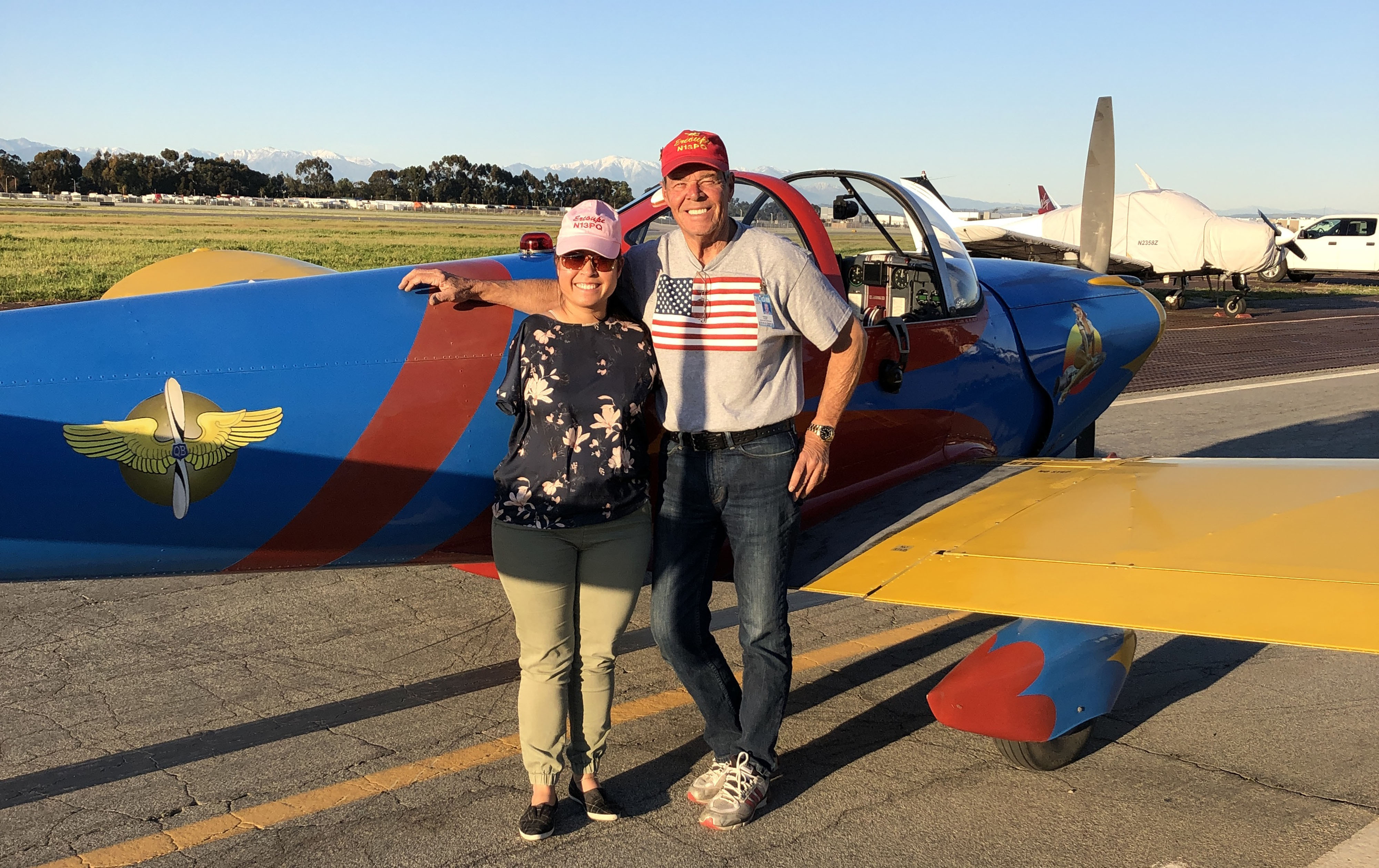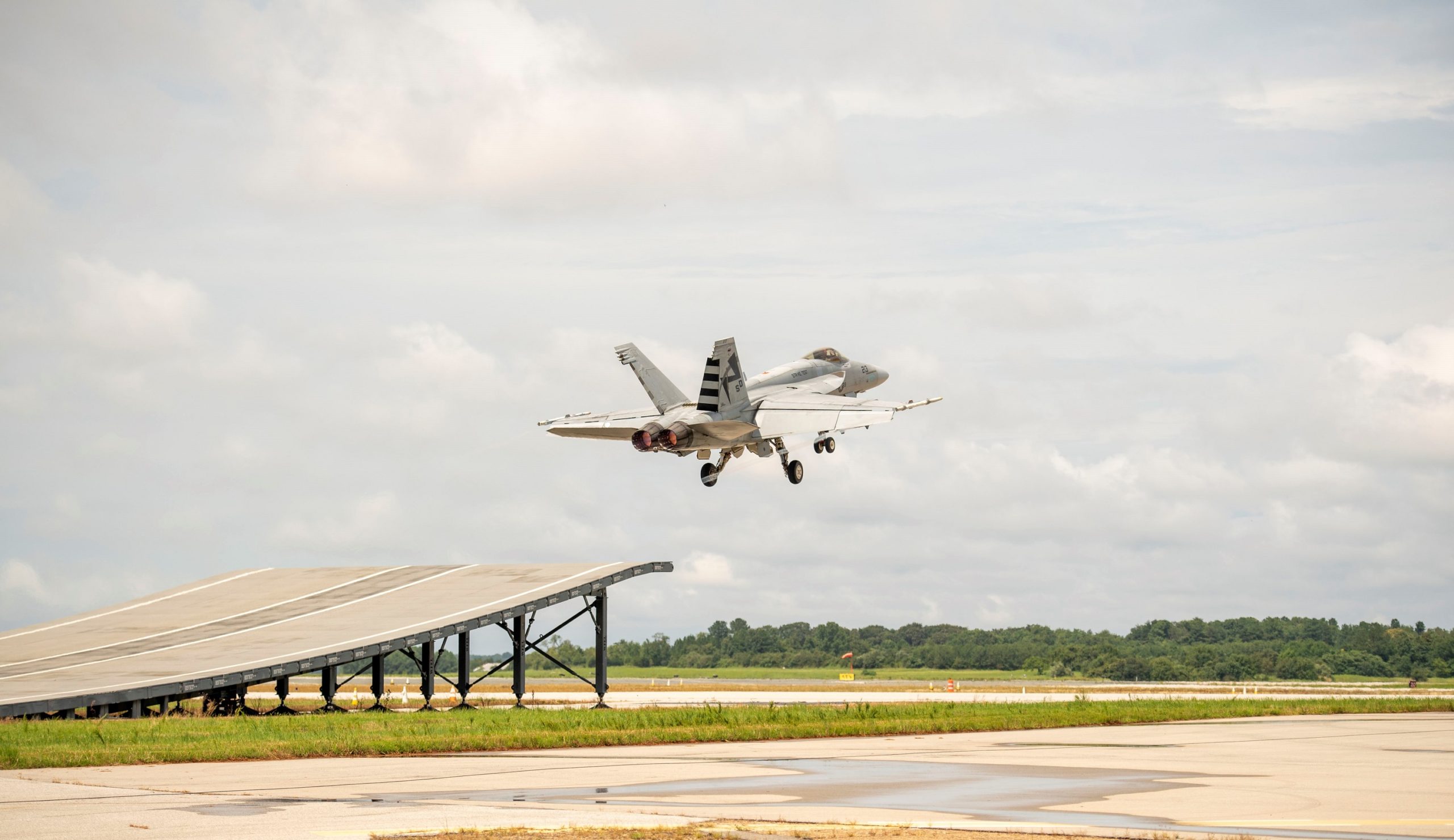KAI KF-21 (KF-X)
KAI KF-21 (KF-X) shambo.pfaff@i… Thu, 10/07/2021 - 21:12 The Korea Aerospace Industries (KAI) KF-21 Boramae (Northern Goshawk) is a multi-role 4.5 generation fighter. The aircraft is powered by two General Electric (GE) F414-400K turbofan engines....
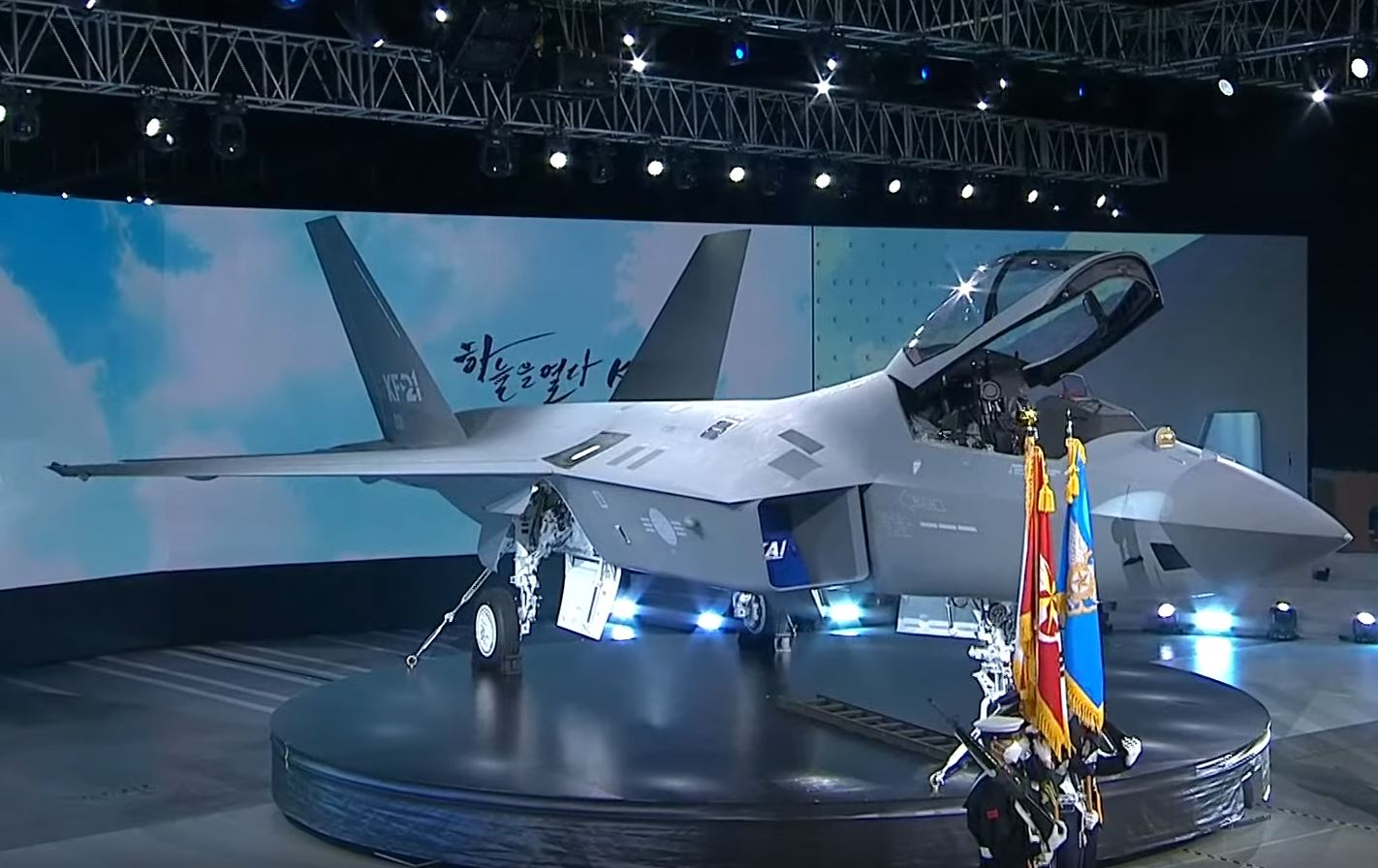
The Korea Aerospace Industries (KAI) KF-21 Boramae (Northern Goshawk) is a multi-role 4.5 generation fighter. The aircraft is powered by two General Electric (GE) F414-400K turbofan engines. The KF-21 will be built in two capability blocks with the first increment storing munitions externally while the second block stores munitions in an internal weapons bay. The aircraft was formerly designated as KF-X until April 2021.
Program History
Prelude & Early Ambitions
In the early 1990s, South Korea sought to develop a robust domestic aerospace industry. Under the Peace Bridge II program, Lockheed Martin agreed to open a production line for F-16s in Korea. Hundreds of South Korean engineers were trained in the United States in preparation for domestic F-16 production and Lockheed Martin committed to a series of offset agreements including the development of a new Advanced Jet Trainer (AJT) designated as the KTX-2 which would become the T-50. In response to the Asian Financial Crisis of 1997, the Korean government directed the creation of KAI in October 1999 from the three largest aerospace chaebols (Korean conglomerates): Daewoo Heavy Machinery, Hyundai and Samsung Techwin (formerly Samsung Aerospace).
As KAI gained experienced with the KTX-2 program, the Kim Dae-jung Administration began to study proposals to develop an indigenous fighter. In August 2001, Defense Minister Kim Dong-shin announced the government would begin development of an indigenous fighter in 2003 which would enter service in 2015. In 2002, the Republic of Korea Air Force (ROKAF) wrote the initial Required Operational Characteristics (ROC) for a medium weight fighter which would be slightly superior to the F-16. The original requirements did not call for low observability (LO) or internal carriage of weapons. During the 197th meeting of the Korean Joint Chiefs in November 2002, initial KF-X ROCs were approved. A medium performance indigenous fighter would be developed to complement the higher-end F-15K which had been selected as the F-X in April 2002. The F-X program began in November 1997 and originally sought to procure 120 fighters by 2020 but was ultimately divided into three distinct phases for 40 (2002), 21 (including one attrition replacement, 2008) and 60 (revised down to 40, 2014) aircraft respectively.
Development work for the medium performance indigenous fighter would be led by the Agency for Defense Development (ADD) which coordinates nationwide defense R&D activities and reports directly to the Ministry of National Defense (formerly the Defense Acquisition Procurement Agency or DAPA until 2014). By 2007, South Korea was looking at developing a 5th generation, LO fighter. The world’s first 5th generation fighter, the F-22, had reached initial operational capability (IOC) just two years prior following more than 20 years of development. Ambitious plans to expand domestic industry and discord amongst Korea’s defense policy community greatly contributed towards the program’s initial delays. Furthermore, differences in defense policy between subsequent administrations greatly affected the progress and funding of the KF-X program.
Feasibility Studies & Evolution of Requirements
Between 2002 and 2014, the government commissioned multiple feasibility studies on KF-X from the Korea Institute of Defense Analysis (KIDA), Korea Development Institute (KDI), Konkuk University and the Korean Institute of Science and Technology Evaluation Assessment (KISTEP). In 2012, the ADD also hired IHS Janes and Strategic Defense Intelligence to examine the KF-X’s exportability.
In December 2007, the Korea Development Institute (KDI), an economic policy think tank staffed largely by government employees, found that the program would cost ₩10 trillion ($10.6 billion in adjusted 2020 dollars) and result in only ₩3 trillion ($3.2 billion in adjusted 2020 dollars) in economic benefits. KDI’s ROCs assumed KF-X would be LO with internal carriage for four air-to-air missiles (AAMs) and performance characteristics in between the F-16 and F-15. In October of that year, four companies had submitted bids for KF-X (now nicknamed Boramae): Saab, Airbus (then EADS), Boeing and Lockheed Martin. Saab submitted two derivatives of its JAS 39 C/D fighter. The P305 was a single engine derivative while the P306 had twin engines, both stored weapons internally. EADS offered the Eurofighter Typhoon as the basis for a cooperative development program. Boeing and Lockheed Martin were operating under stringent U.S. export controls and kept a lower profile during the early stages of KF-X.
2009 marked a series of important milestones for the KF-X in terms of international participation and solidification of requirements. On March 9, 2009, South Korea and Indonesia and signed a Letter of Intent (LOI) for the joint development of KF-X. Indonesia committed to fund 20% of the KF-X development and purchase 50 IF-X (Indonesian derivative KF-X) aircraft. South Korea attempted to solicit Turkish participation in the program but Korea and Turkey were reportedly unable to reach an agreement regarding leadership of a co-development program. KF-X program requirements
In 2009, the government commissioned Konkuk University’s Weapons System Concept Development and Application Research Center to study the feasibility of the KF-X program. The study was led by Major General (ret.) Shin Bo Hyun who had previously led the original F-X evaluation team in 2002. Major Gen. Hyun’s report found development and production of the KF-X was feasible if the KF-X was effectively downgraded to a 4.5 generation platform. The study concluded 5th generation capabilities were not necessary in a North Korea scenario. Stand-off weapons would allow non-LO aircraft to conduct strikes. The study proposed the following ROCs :
- Combat Radius: 1.5 times that of the F-16C/D Block 52 (approximately 500 miles or 800 km)
- Service Life: 1.34 times that of the F-16C/D (approximately 10,700 hours)
- Empty weight of 10.4 metric tons (22,928 lb.)
- Reduced radar cross section (RCS), but not true LO
- One to two engines
A 4.5 generation fighter would cost ₩6 trillion ($6.1 billion in adjusted 2020 dollars) to develop and approximately ₩50 billion to build ($51 million in adjusted 2020 dollars). A production run of 250 aircraft would be required to reach sufficient economies of scale. A total of 120 KF-Xs could be built to replace the legacy Boeing F-4 Phantom and Northrop F-5 fleets. An additional 130 could be built to eventually replace the ROKAF’s F-16 fleet. The study concluded that South Korean industry possessed 63% of the required technologies for the program. Konkuk University’s conclusions were well received and the program ultimately abandoned hopes to produce a fifth generation fighter – at least in the short term (Block II and notional Block III).
Ties to F-X
The DAPA under the Myung-bak Lee Administration (Feb. 2008 to Feb. 2013) lowered F-X Phase III ROCs in an effort to make the bid more competitive and emphasize technology transfer for F-X at the cost of platform capability (particularly in terms of LO). The new ROCs enabled Boeing’s F-15 Silent Eagle (F-15SE) and Airbus Eurofighter Typhoon to participate alongside Lockheed Martin’s F-35. EADS (Airbus) offered to invest $2 billion in the KF-X program as part of its Eurofighter Typhoon bid. In August 2013, the DAPA selected the F-15SE as the only qualified bidder of the F-X Phase III as Lockheed’s bid exceeded the specified price restrictions and the Eurofighter Typhoon was disqualified for a bidding irregularity. Later that month, a group of 15 former ROKAF Generals signed a petition against the F-15SE’s selection. The Defense Project Promotion Committee chaired by Defense Minister Kim Kwan-jin overturned the initial DAPA decision in accordance with new ROCs from the Joint Chiefs favoring LO performance. On March 24, 2014, Seoul announced its intent to purchase 40 F-35As – a reduction from 60 for budgetary purposes. On Sep.24, it announced it had completed negotiations with the U.S. government regarding price, offsets and technical details. As part of the ₩7.34 trillion ($6.5 billion in adjusted 2020 dollars) deal, Korea requested the transfer of 25 technologies to support the KF-X program.
KAI Down Select
In December 2014, the DAPA issued a request for proposals (RFP) for the KF-X program. Two teams participated throughout the competition: KAI-Lockheed Martin and Korean Air Lines (KAL)-Airbus-Boeing. The RFP requires a clean sheet design, but the KAL team reportedly wanted to use a modified F/A-18E/F with Airbus supplying components the U.S. manufacturer could not. However, Boeing ultimately withdrew before bidding which opened in February 2015. The Defense Acquisition Program Administration (DAPA) selected the KAI-Lockheed Martin team for the Korean Fighter Experimental (KF-X) program a month later. In November 2015, Indonesia agreed to fund ₩1.7 trillion ($1.54 billion in inflation adjusted 2020 dollars) or approximately 20% of the program’s development costs. South Korea followed through by awarding the KF-X development contract to KAI in December.
The Finance Ministry approved ₩8.69 trillion budget ($7.65 billion in adjusted 2020 dollars) for KF-X’s development over a period of 10 years and 6 months. Korean industry and Indonesia will fund 20% of the aircraft’s development costs each with South Korean government financing the remaining 60%. The total program is expected to cost ₩18 trillion ($15.1 billion) for both development and production of 120 aircraft.
Caption: Given the high risk of the KF-X program, the Korean National Assembly made only minor investments in the program until recently. Funding in millions of dollars. Credit: AW IDS
Lockheed Martin will provide more than 300 man-years worth of engineering expertise in assisting Seoul in designing its KF-X. Lockheed Martin will also offer more than 500,000 pages of technical documentation derived from the F-16, F-22 and F-35.
Design Evolution
With the objective of creating a reduced RCS but not LO design established, the ADD began exploring designs in 2012. The two primary candidates were a delta-wing canard design and a conventional tail and horizontal stabilizer layout which it considered to be European and U.S. style designs respectively. The C101 design followed the “U.S.” style wing-tail arrangement and progressed to the C-102, C-102E (single engine), C-102I (internal weapons bay), C-102T (twin-seat) and finally the C-103. The C-201 followed a similar progression with its own C-202, C-202E, C-202I, C-202T and C-203.
Separately, KAI initially wanted to develop its own KFX-E which had a single engine which it argued was cheaper than the more ambitious C-103 and C-203 designs put forward by the ADD. The company developed two versions of the KFX-E, one with a single vertical tail and one with canted twin tails. The KFX-E had an empty weight of 20,500 lb. (9.3 metric tons) and made use of technologies used on the FA-50 in flight control, landing gear, auxiliary power, electrical and environmental systems. During the 290th meeting of the Joint Chiefs in July 2014, the Joint Chiefs ruled that the KF-X must have two engines following an internal study as well as consultations with the DAPA, ADD and KIDA.
By the time Lockheed Martin won the separate F-X phase III in 2013, the ADD had moved to develop C-103 into the C-104 which featured conformal antennas and refined placement of internal systems. Full scale development began in late 2015. The design grew significantly from the original C-103 which had a 10.7-meter wingspan and 10.9 metric ton empty weight. The intake was enlarged on the C-105 design – likely following the selection of the GE F414. The fuselage length and wingspan grew progressively throughout the design. The cockpit was moved forward in C-106 and the engines were spaced farther apart in C-107.
The C-108 configuration made minor refinements to the C-107 design including the elimination of small forward extensions at the roots of the mainplane that blended with the fuselage. The leading edge now meets with the fuselage at a sharp angle. Furthermore, the fins of C-108 extend farther aft than C-107. C-108 wingspan was 11.2 meters (36.8 ft.) with a length of 16.9 meters (increase of 10 cm or 4 inches) and height of 4.7 meters (down 10 cm). The final C-109 design again made relatively minor refinements with a slight increase in wingspan and decrease in height. The preliminary design review (PDR) was finalized in June 2018 – freezing the configuration of the aircraft’s outer mold line. The critical design review was completed in September 2019 which validated design details prior to prototype manufacturing.
Features
Airframe
The KF-X airframe is 55.45 feet long (16.9 meters) long, has a wingspan of 37.5 feet (11.2 meters) and height of 15.1 feet (4.6 meters). The aircraft has an empty weight of 26,500 lb. (12,000 kg), maximum take-off weight of 56,440 lb. (25,600 kg) and payload of up to 16,976 lb. (7,700 kg) across 10 hardpoints. KF-X has a maximum range of 1,800 miles (2,900 km) and maximum speed of Mach 1.8
Broadly, the final C109 design shares an initial resemblance to the F-22 with its caret inlets and boundary layer diverter, canted twin tails aligned with the inlets, prominent chine running from the nose to the upper inlet surface, flat lower fuselage (unlike the F-35), etc. However, the KF-X’s wing geometry differs from the F-22’s much larger diamond shaped wings win run closer to the aircraft’s horizontal stabilizers. The F-22’s wing area is 840 sq. ft. (78.04 m^2) compared to 500 sq. ft. (46 m^2). However, the KF-X’s much lower weight ensures it has a relatively low wing loading even with a comparatively smaller wing. In October 2019, Jung Kwang-seon, chief of DAPA’s KF-X development team, said “It’s operating cost is half of the U.S. stealth jet and features high-tech maneuvering capability next to the F-35A” - which ranged between $36,000-44,000 for the A model in recent years.
Reduced Observability
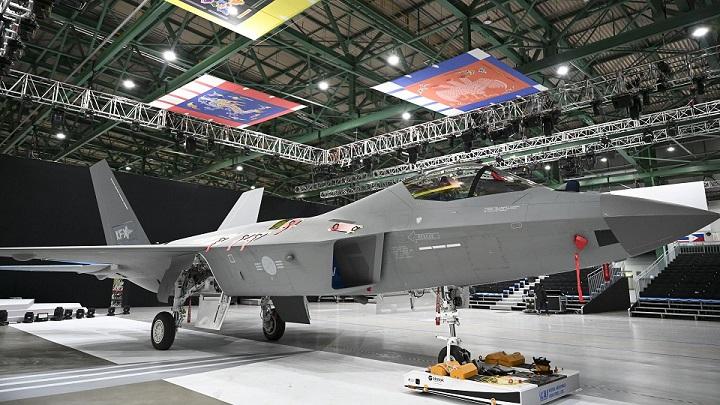
KF-21 prototype 01. Image Credit DAPA
As per the following equation, a one order of magnitude reduction in RCS corresponds to a 44% reduction in detection range while a two order of magnitude reduction corresponds to a 68% reduction in detection range:
R2/R1 = (σ2/σ1)1/4
R1 = the maximum range from which a target of RCS σ1 can be detected given the noise background.
R2 = the new maximum range at which the target can be detect if the RCS is reduced from σ1 to σ2
As per the KF-X ROC requirements, the KF-X design features a reduced radar cross section (RCS) but not full LO. Block I aircraft make use of shaping techniques to lower the aircraft’s RCS including the use of planform alignment on the aircraft’s flight surfaces, serpentine ducts to obscure the face of the engines to radar and use of radar absorbent structures within the airframe. South Korean media discuss the Block I as having an RCS lower than the F/A-18E/F on the order of 0 to -10 dBsm or 1 to 0.1m^2. As the Block I will have provisions for but will not fitted with an internal weapons bay, stores will be mounted on wing pylons or conformally along the aircraft’s fuselage. However, the use of external stores will significantly degrade the aircraft’s signature performance. General Dynamics' F-16XL had a 50% lower frontal RCS in a conformal stores air-to-air configuration than production F-16As at that time - corresponding to a 16% reduction in detection distance. However, General Dynamics found that this advantage was ostensibly negated when air-to-surface stores such as LANTRIN pods and bombs were fitted to the airframe.
The notional Block II design will reduce the KF-X’s RCS further with the introduction of an internal weapons bay and improved radar absorbent material (RAM) coatings. Likely RCS reduction enhancements could include use of an electroconductive canopy, conductively coated lights, minimizing gaps between panels (such as applying form-in-place sealant), etc. However, even with Block II enhancements, its difficult to see how the KF-X could approach the LO of the F-35 and F-22. The F-35 and F-22 have a frontal RCS of a golf ball and steel marble respectively or approximately 0.0013m^2 (-30 dBsm) and 0.0002m^2 (-40 dBsm).
The current C-109 design has a number of outer mold line features which inherently limit its LO potential. The Skyward IRST is not mounted in an enclosed LO aperture such as the F-35’s EOTS or F-22’s truncated AIRST. For ease of integration purposes, no effort was made to internal carry an internal EO targeting sensor like EOTS. The EOGTP will be externally mounted which will reduce the ability of the KF-X to conduct air-to-surface missions in an LO configuration. The C-109 also lacks rear aspect LO. The GE F414-400 engines do not incorporate sawtooth edges or other modifications to reduce radar returns.
Avionics
Radar
The ADD has been tasked with developing an active electronically scanned array (AESA) radar for the KF-X in partnership with Hanwha Systems and Elbit. Before full-scale KF-X development began in 2014, South Korean industry had some experience developing naval and ground based AESA radars – but no fighter mounted radars. In 2016, the ADD chose Hanwha over LIG Next1 as the prime contractor and budgeted ₩380 billion ($315 million) for the radar’s development . In 2017, Elta was awarded a $37 million contract to provide technology and operational testing for the KF-X’s radar development. As of October 2019, the KF-X radar has been flight tested on board Elta’s 737 radar test bed 10 times in Israel and six times in Korea. In February 2020, Elbit announced it had received a $43 million contract from Hanwha Systems to develop terrain following and terrain avoidance systems.
The radar passed a critical design review (CDR) in May 2019. The KF-X prototype is due to flight test the radar in 2023 and development is due to complete in 2026 – just prior to the delivery of the first Block I aircraft. As of March 2020, development of the radar was 50% complete and prototype testing was expected within months. The radar will have approximately 1,000 transmit receiver (TR) modules and reportedly has a range of 68 miles (110 km) – presumably against a fighter sized target between 1-5 m^2. In comparison, the Northrop Grumman APG-80 has 1,020 T/Rs for the F-16 Block 60 and is estimated to have a range of approximately 60 nautical miles (111 km) against a 1 m^2 target. Hanwha’s radar will use gallium-nitride (GaN) semi-conductors.
ALQ-200K Electronic Warfare System
In response to the U.S. withholding RF jamming technology from the KF-X program, Korea sought to modify the existing LIGNex1 ALQ-200K electronic warfare pod for internal carriage within the KF-X. The ALQ-200K pod was originally developed to replace the KF-16’s internal ALQ-165 electronic warfare system which first entered ROKAF service in 1999. The ALQ-200K is capable of modern Digital Radio Frequency Memory (DRFM) jamming techniques and has greater power output and antenna gain than the ALQ-165.
Infrared Search and Track
The KF-X’s Infrared Search and Track (IRST) will be based upon the Leonardo Skyward system which has also been selected for the Saab JAS 39 E/F Gripen. Leonardo says the system has a search azimuth of plus or minus 85° horizontally and plus or minus 65° vertically. The system weighs 55 lb. (25 kg) and operates in the mid-wave and long-wave infrared spectrum. No range figures were available at the time of this writing, but for benchmarking purposes, the Russian OLS-35 IRST used on the Su-35 can detect a Su-30 frontally at 18 miles (30 km) and 56 miles (90 km) from the rear. Leonardo’s older Pirate IRST used on the Eurofighter reportedly has a range between 31 to 50 miles (50 to 80 km), and has an identification range greater than 25 miles (40 km).
Electro-Optical Ground Targeting Pod
Hanwha will develop the Electro-Optical Ground Targeting Pod (EOGTP) which will deliver by 2026 for the first Block I aircraft. The pod will be capable of day and night detection and tracking of ground targets as well as providing semi-active laser guidance for precision guided munitions.
Miscellaneous
Cockpit layout features a Hanwha Systems multi-function display measuring 8 x 20 inches. The HUD will be a BAE Systems design manufactured under license by LIG Nex1. Cobham will supply conformal antennas for the aircraft’s Communications, Navigations and Identification antennas. The aircraft will use a data link provided by LIGNex1 though KAI has stated Link 16 or other data links could be integrated in the future.
Weapons
Weapons Carriage
In February 2019, Jung Kwang-sun, head of KAI’s KF-X Development Division remarked that KAI had kept the space provisions for a weapon bay within the fuselage at the request of the ROKAF. A KAI KF-X promotional video from February 2019 showed two internal weapon bays with 2 AIM-120s each. The earlier C-107’s weapon bays could accommodate four AIM-120s for air-to-air missions or four GBU-39 Small Diameter Bombs and two AIM-120s for self-defense. However, these promotional materials were created prior to the decision to use the MBDA Meteor and Diehl IRIS-T.
Cobham was awarded a contract worth more than £7 million deliver Missile Eject Launchers (MEL) for the KF-X program. The MELs a long stroke ejection system which throw weapons from the launch platform at a speed of 30 ft. (9 meters) per second.
Air-to-Air
South Korea originally wanted to arm the KF-X with U.S. made weapons including the Raytheon AIM-120C radar guided AAM and AIM-9X IR guided AAM. However, the U.S. was unwilling to provide export licenses for the missiles. Thus, the DAPA selected the MBDA Meteor and Diel IRIS-T. DAPA’s analysis concluded U.S. missiles would have been easier to integrate and less costly. In November 2019, MBDA was awarded a contract to integrate the Meteor on the KF-X. However, the ROKAF still wants to use U.S. missiles and a renewed push to integrate U.S. AAMs on the KF-X is expected after its first flight in mid-2022. The KF-X will also be armed with a 20 mm M61 Vulcan Cannon which will be mounted on the port side.
Air-to-Surface
Block II aircraft will be able to carry a variety of air-to-ground munitions including the Joint Direct Attack Munition (JDAM), laser JDAM (LJDAM), Korea GPS Guided Bomb (KGGB), GBU-39/B SDB I, GBU-53/B SDB II, HARM anti-radiation missile and LIG Nex1 low observable stand-off cruise missile.
The missile is expected to have the following characteristics: range less than 310 mi. (500 km), weighs less than 2,900 lb. (1,300 kg) and has a warhead weight of less than 1,102 lb. (500 kg). Preliminary development began in late 2016 at a projected cost of ₩300 billion ($250 million) and a production run off 200 rounds is estimated to cost ₩500 billion. The new cruise missile is smaller than the KEPD 350K-2 externally, but the missile will not fit within in the weapon bays of the Lockheed Martin F-35. It is intended to be carried by the KF-X. Guidance will be similar to that of the KEPD 350K-2, which uses inertial and satellite and imagining infrared systems. Taurus’s missiles have warheads designed for penetrating hardened targets. The function of the warhead that ADD is designing is unknown.
Engines
The KF-X will be powered by a pair of GE F414-400K turbofan engines capable of producing 22,000 lbf. each. KAI, Hanwha Techwin and the DAPA evaluated both the F414 and Eurojet EJ200 with 26.7% of the assessment points allocated to cost, 33.3% to technical issues such as performance, 24.7% to opportunities for domestic production, and 15.4% on “management,” including terms and conditions and technology transfer. The GE F414 bid was found to be superior in all aspects of evaluation.
In June 2020, South Korea took delivery of its first F414-400K engine. GE announced it expects to deliver 240 F414s to KAI over the life of the KF-X program and 15 engines are currently on order to power six prototypes.
Variants
The KF-X family will consist of the KF-X and IF-X which encompasses both single and twin seat derivatives of each aircraft as well as three block configurations.
Block I
As described above, initial production configuration of KF-X with air-to-air capability. Sources disagree on if the Block I will have either a limited or no air-to-ground capability. The Block I has provisions for an internal weapons bay but can only carry weapons externally.
Block II
Planned for introduction in 2029, the proposed Block II configuration will allow for internal stowage of munitions. Full air-to-ground munitions capability would be added. Some sources do not think the Block II will materialize as with the Block III.
Block III
Plans for a notional Block III with full LO provisions has been discussed, but such a configuration has not been approved for serial production.
Indonesian IF-X
Indonesia has reportedly requested a number of modifications for their IF-X. These changes include a refueling probe (instead of boom refueling), greater range and a data link that would enable the aircraft to share data with Sukhoi Su-27 and Su-30 fighters.
Production & Delivery History
South Korea
The ROKAF plans to procure an initial batch of 120 KF-Xs between 2026 and 2032 to replace its F-4 Phantom and F-5 Tiger II fleets for approximately ₩9.31 trillion or $8.27 billion. KAI began manufacturing its first KF-X prototype on February 14, 2019 and started final assembly of the prototype in September 2020. In April 2021, the company formally designated the type as the KF-21 in a roll out ceremony. The KF-21's first flight is expected to follow in 2022. A total of six prototypes will be produced, including four single seat and two twin seat aircraft. The ROKAF will review test results in 2024 prior to issuing a production contract. KAI plans to conduct 2,100 flight tests by the first half of 2026. A total of 40 aircraft produced from 2026 to 2028 will be of the Block I configuration. The next batch of 80 aircraft is planned between 2029 and 2032 and may be built to the Block II standard. The ROKAF might procure additional aircraft to replace its F-16 fleet.
In April 2021, KAI's CEO Hyun-ho Ahn discussed the KF-21 as a more affordable complement to the F-35. Citing external analysis, Hyun-ho Ahn believes the KF-21 could reach a fly-away cost of $65 million relative to the F-35A's $77.9 million in 2022. Sustainment cost would be approximately half of the JSF according to KAI. The cost-capability mix of the KF-21 could open many export opportunities in the late 2020s into the 2030s as even senior USAF officials have stated fifth generation aircraft are too expensive to maintain in large quantities. In many ways, the KF-21 tracks with the "son of F-16" type capabilities discussed by Chief of Staff of the Air Force Gen. Brown. Notably, Hyun-ho Ahn would not discuss the development of the prospective Block II variant.
Indonesia
In 2018, Indonesian President Joko Widodo sought to renegotiate the terms of Indonesia’s involvement with the KF-X program. In the end of 2017, the Indonesian Finance Ministry refused to fund a $124.5 million payment for KF-X development. In January 2017, Chief of Staff Gen. Lee Wang-kuen traveled to Jakarta to meet with Air Chief Marshall Hadi Tjahjanto. Indonesia is supposed to pay two contributions each year but has little margin for a costly long-term development project. Total defense outlays for 2017 totaled $8.17 billion and fell to $7.98 billion in 2018. In January 2019, Indonesia made a ₩132 billion ($109 million) contribution for a sum total of ₩220 billion ($183 million) out of ₩520 billion ($432 million) owed to the program. In December 2019, the DAPA announced Indonesia had requested a reduction in development costs and an increased in technology transfer.
In February 2021, Air Chief Marshall Fadjar Prasetyo stated the Indonesian Air Force (TNI-AU) intended to acquire 36 Dassault Rafales and at least eight Boeing F-15EX fighters to replace its Flankers. The service had previously expressed interest in the Lockheed Martin F-16 Block 72 and the Sukhoi Su-35S. Indonesian Defense Minister Prabowo Subianto attended the KF-21's roll out ceremony in April 2021 and met with Korean officials but these meetings reportedly did not resolve Indonesia's future participation in the program.




 admin
admin 











